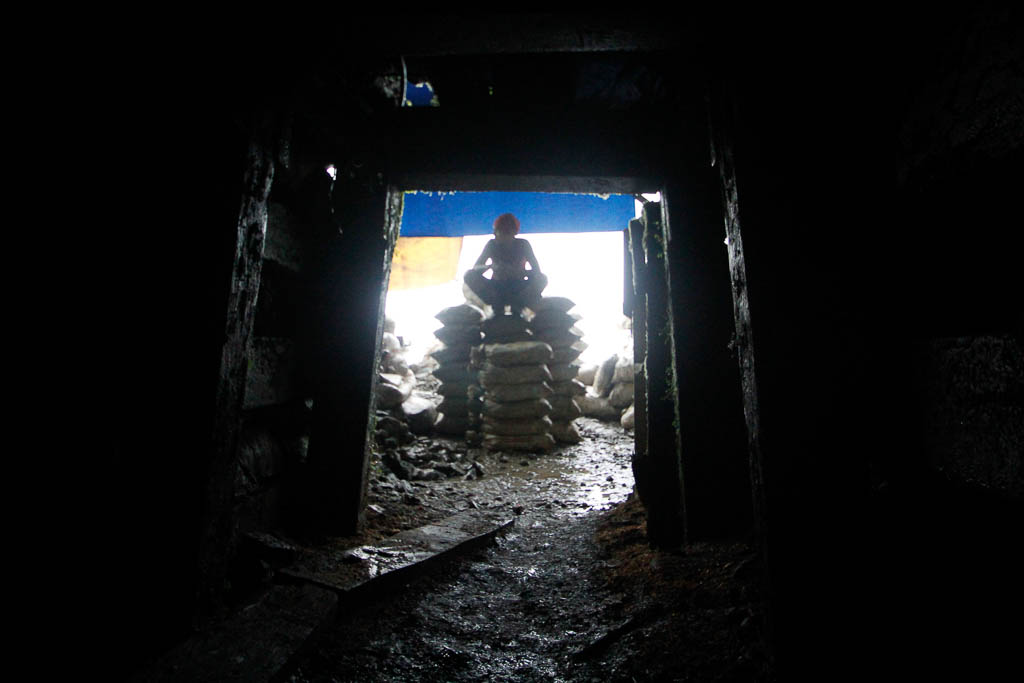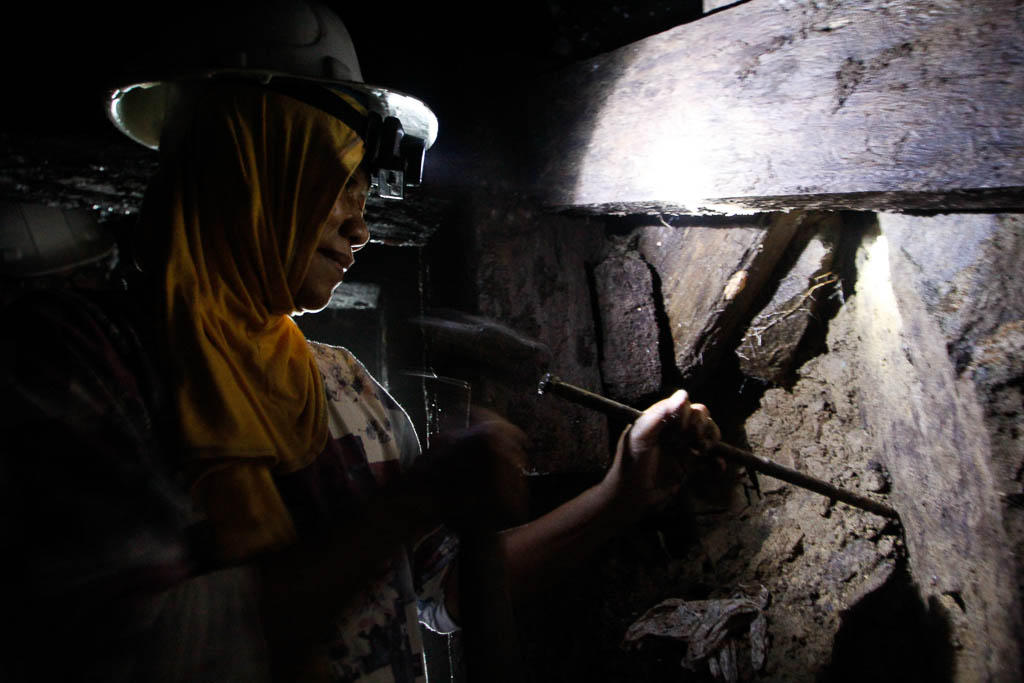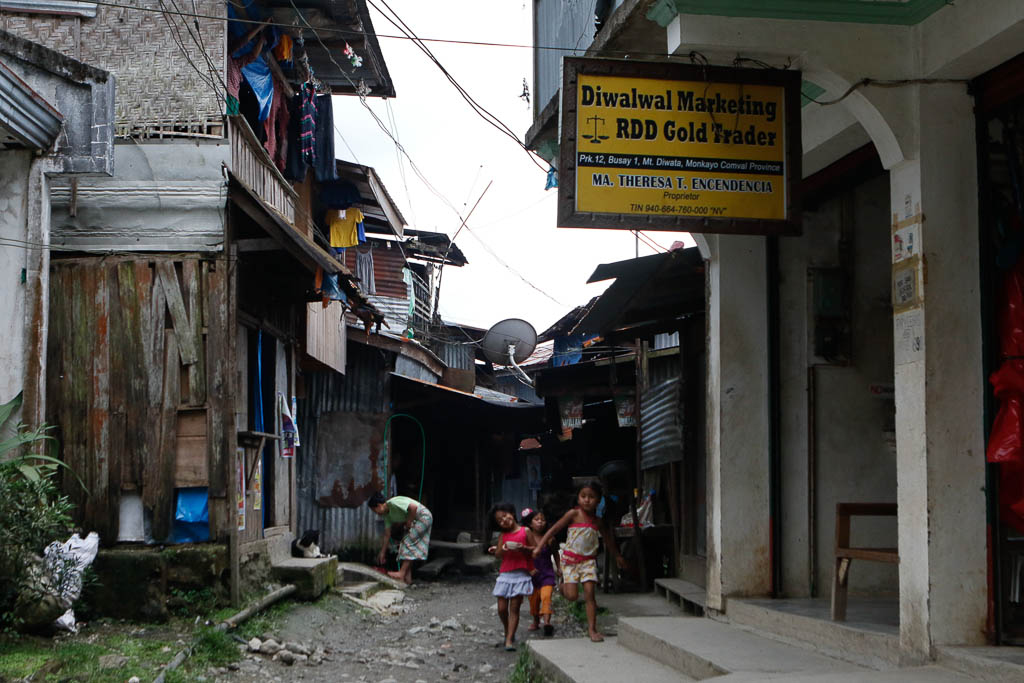The locals of Mount Diwata village in Monkayo, Compostela Valley, like to say that their community was named after diwatas — divine female spirits that used to reign over the mountains. During ancient times, it is said, this place was full of wild animals and gold protected by the diwatas. People would go up to the mountains to worship these spirits. That changed in the 1980s, when Datu Camini of the Tribe of Mandaya discovered gold in Mt Diwata — also known as Diwalwal.

Thousands of prospectors from other parts of Mindanao, Visayas and as far as Baguio City arrived by the truckload but, as the local saying here goes, “ubus-ubos biyaya” — luck eventually ran out.
The Philippines has the fifth largest deposits of minerals like gold, copper, chromium, and nickel in the world. Artisanal and small-scale gold mining is popular in the rural areas because miners see it as an easy way out of poverty.
Mt. Diwata had one of the largest gold mines in the 1980s. However, according to councilor Guillermo Dayut Jr, the supply started to decline after Super Typhoon Pablo struck the mountains in December 2012. Some tunnels were either blocked or flooded, and the quality of gold was downgraded.

The population of mining families has decreased from 18,000 in 2009 to 12,500 in 2015. Many left to seek livelihood in other areas where there are more gold deposits, and those who stayed still continue to operate the mines, but now female miners are alongside them.
As early as 1983 females were allowed to work in mining sites, but their tasks were limited to activities outside the tunnel, such as crushing ores. That changed 20 years later, when the village captain allowed women to enter the tunnels. These days, there are almost 1,000 women miners, ranging in age from 20 to 60 years old.

Miners go inside the tunnels with their gear, flashlights, packed foods and air bags. They can stay for as long as 72 hours or more, depending on the resources inside. Those inside are called abanteros — they’re the ones mining the tunnels for ores that might contain gold. A good tunnel is usually hot inside, meaning there is a high possibility that there’s gold there. Mine sites are called destino.
Mine sites have different sizes, it is considered standard size when a miner is able to stand up inside. There are sinking types and crawling types, too.
Once the ores are extracted, they are passed to the atraseros, or the ones working outside, to crush them into pieces. Then they carry all the sacks of crushed ores to ball mill areas to process the gold in it.
Once you take your sack of ore to a ball mill site, the miner usually pays the owner PHP10-PHP15 per drum, which will be used to process the ores. Mercury is added to the ores as they are grinded inside the drums, the substance separates the gold from the ores. The process takes two hours to finish, after which the ball mill fries the mercury using an air compressor to get the gold inside. They used borax to clean the gold. After that, they use a small weighing scale to determine the weight of the gold that was extracted. The entire process can takes about half a day, or sometimes only three hours, depending on the hardness of the ore.

Pricilla Tulling, mother of seven children, has been a tunnel miner since 2003. Originally from Bacolod, she moved to Monkayo during the gold rush period. “At some point, I worked for 72 hours because I have a child who is college and I needed money for her education,” she told Coconuts Manila. “Some mine sites can be very hot, some are also cool, or sometimes it has a ‘shower’ because there’s water inside. I don’t just go to any tunnel. I ask first if there are other miners inside. The expense can be big, you have to pay for the sack, tools, food and flashlight. What if you end up not retrieving anything?”
Female miners face the same dangers as their male counterparts. Both are exposed to hazardous chemicals like mercury (pregnant women have it worse as exposure to mercury can result in still-born babies), risks of landslides, sudden floods and lack of air if they stay too long inside the tunnel. But most of the women feel that they are holding the short end of the stick.

AC Dimatatac
While they are paid the same as the male workers — the going rate of gold per gram is PHP1,200 and a day’s work for women amounts to only three sacks of ore that sometimes can be equivalent of .7 up to 1 gram of gold — their pay is credited to the wages of their husbands. The men also tend to set aside money for their vices, while the women use spend everything on household expenses.

That is why women’s groups offering other means of livelihood have been formed. Tindahan ng mga Kababaihan, for example, is a convenience store where women from the different areas within Mt. Diwata can avail of an emergency fund.
Some of the women also venture into alternative mercury-free mining methods, such as the gravity concentration method, introduced in the province by Ban Toxic, a non-government organization. So far, old-school miners have been reluctant to try the safer and environment-friendly method, mainly because the yield is not as fast.

“At first I wasn’t convinced,” said Marita Acut, caretaker of the Ban Toxics facility. “But when my husband brought home a sample, we compared the quality of gold with mercury and without, and it convinced me that the gravity concentration method is better because you get a better price and the process is easier.”
In the gravity concentration method, instead of mercury, the gold ist trapped using rugs. After grinding the ores in the ball mill, they mix water to the remains and let it flow inside a sluice box with a rug on it. The gold is usually trapped in the rugs.
After the second round of grinding, they use panning method in the concentrated remains and mix it with water. This is the old form of mining, wherein they use large pans and rotate it until the gold separates itself from the rest of the ores. Sometimes they used magnet in order to separate foreign materials.
Only pure gold can be extracted using the mercury-free method, because only water has been added. The rugs used are able to trap the gold because gold is usually heavier that the rest of the elements. Unlike in mercury method, some elements like manganese get trapped too.
“Technical miners” is what they call those who train other miners how to use the gravity concentration method. Together with the other technical miners like Tulling, they go around Monkayo training miners.
Through talks and gatherings, they also provide information mothers and children about the dangers of mercury.
Surely, women in this community are becoming more empowered and vigilant. They are not the ethereal diwatas portrayed as guardians of the mountain in local mythology. They are just simple folk working hard to be advocates for sustainable and environmentally concerned practices. There’s no magic in that — just a commitment to give back to the mountain that has already given them so much.





Reader Interactions